Exhibition
MA Curatorial Practice Major Year-End Exhibitions 2020
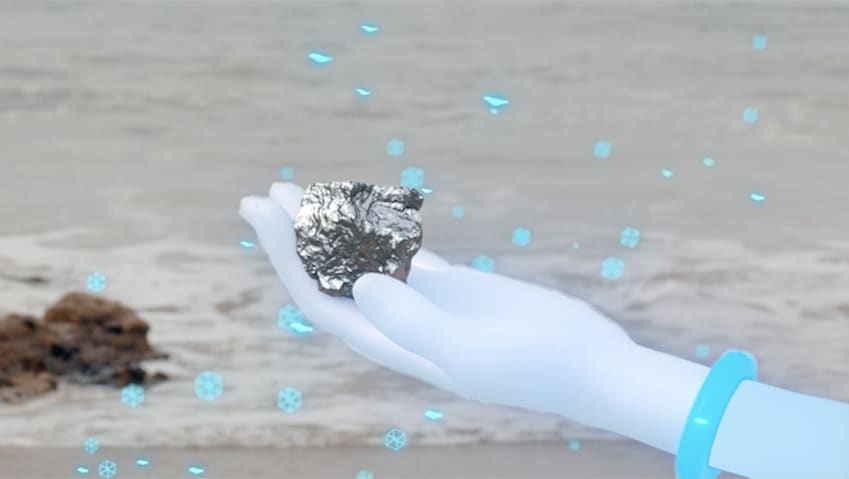
Zach Blas, Contra-Internet (video still), 2017. Image courtesy of the artist. On view in "Ctrl + Shift 1.vv."
ONLINE
View Galleries HerePresenting the final curatorial projects from graduating MA Curatorial Practice fellows. View all the exhibitions online at macp.sva.edu.
"At this extraordinary time, when the possibilities of gathering are beyond the reasonable prospect of opening physical exhibitions, our students have taken on the new skills of creating virtual exhibitions. Of course, there are always new possibilities that come with new skills, reimagining spaces and offering artists different ways of presenting their works, for example, as the virtual world is one of endless galleries in which to unfold a narrative. Yet there is something uncannily premonitory in these exhibitions originally planned in what now seems another lifetime. The subjects of floating labor forces, uprooted intimacy, eroding climates and decay, of digitally overwhelmed communication and what it means to be Other… these were the themes of our exhibitions long before the cataclysm of the virus. Now, as virtual shows, they seem to echo in suddenly more piercing ways, both poignant and provocative. Urgency and speculation are the parents of invention today, and we welcome you to enter these exhibitions in this year of tumult, where each of us must find a way to hold tight against the uneven bending of the world."
—Steven Henry Madoff, Chair, MA Curatorial Practice
<Ctrl + Shift 1.vv>
Organized by Kate Benedict
See it online: macp.sva.edu/ctrl-shift
"Ctrl + Shift 1.vv" emerges out of subversive and urgent demands to make visible how race, gender and capital are factors in creating unequal and unfair conditions. Originally conceived as a series of day-long screenings, lectures, performances and workshops informed by trans- and interdisciplinary approaches to feminist ideas and concepts, "Ctrl + Shift 1.vv" now confronts the violent storm of COVID-19 by creating a new autonomous community zone online. As we aspire to mutual aid and solidarity across the globe, "Ctrl + Shift 1.vv" embraces the mass of unknowns and fears we now face collectively. By operating as a (web)site of creativity and play, "Ctrl + Shift 1.vv" will attempt to find new ways to connect, share and create communities in an age of growing and imposed isolation. For more information, contact Kate Benedict at kbenedict3@sva.edu.
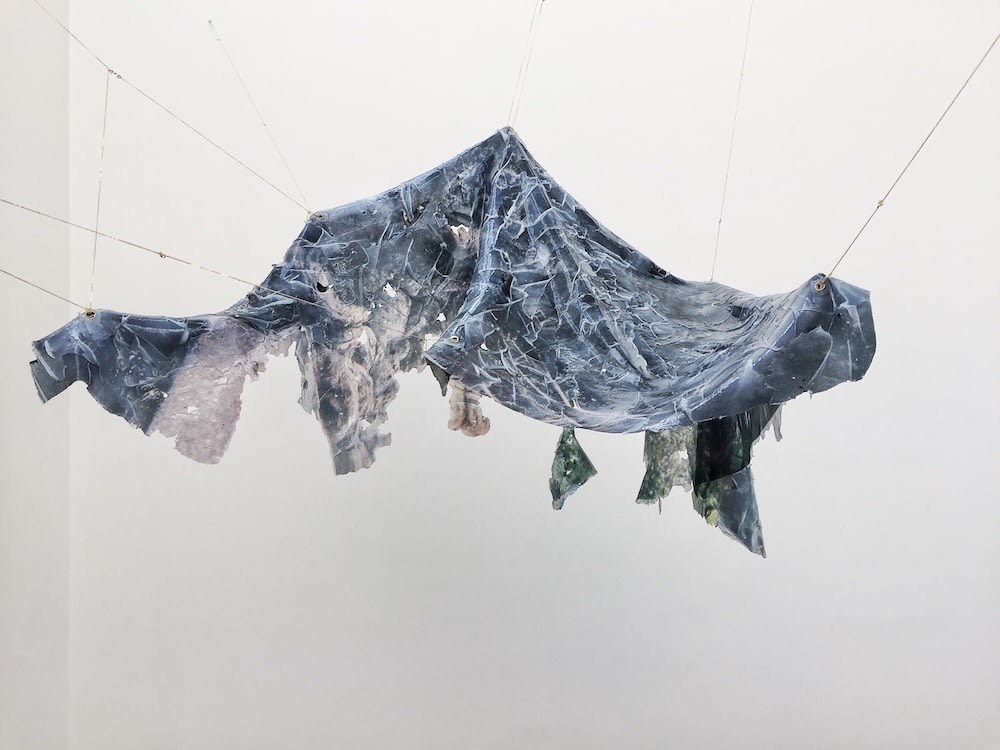
Gaëlle Choisne, Peau de chagrin, 2016. Photo by Anna Dritanti. Image courtesy of the artist. On view in "Glimmering, Decaying."
Glimmering, Decaying
Curated by Claudia Delaplace
See it online: macp.sva.edu/glimmering-decaying
The Caribbean region has been exoticized for its beauty, but its perceived tranquility conceals a tragic history. Its colonization by European powers brought genocide and exploitation to its inhabitants, who today suffer from lack of economic opportunity, rising sea levels and tropical diseases. "Glimmering, Decaying" is a virtual exhibition and online platform that attempts to confront this darker reality through the work of artists dealing with a Caribbean visual culture under pressures of natural disaster, declining air quality, invasive flora and spreading decay. For more information, contact Claudia Delaplace at cdelaplace@sva.edu.
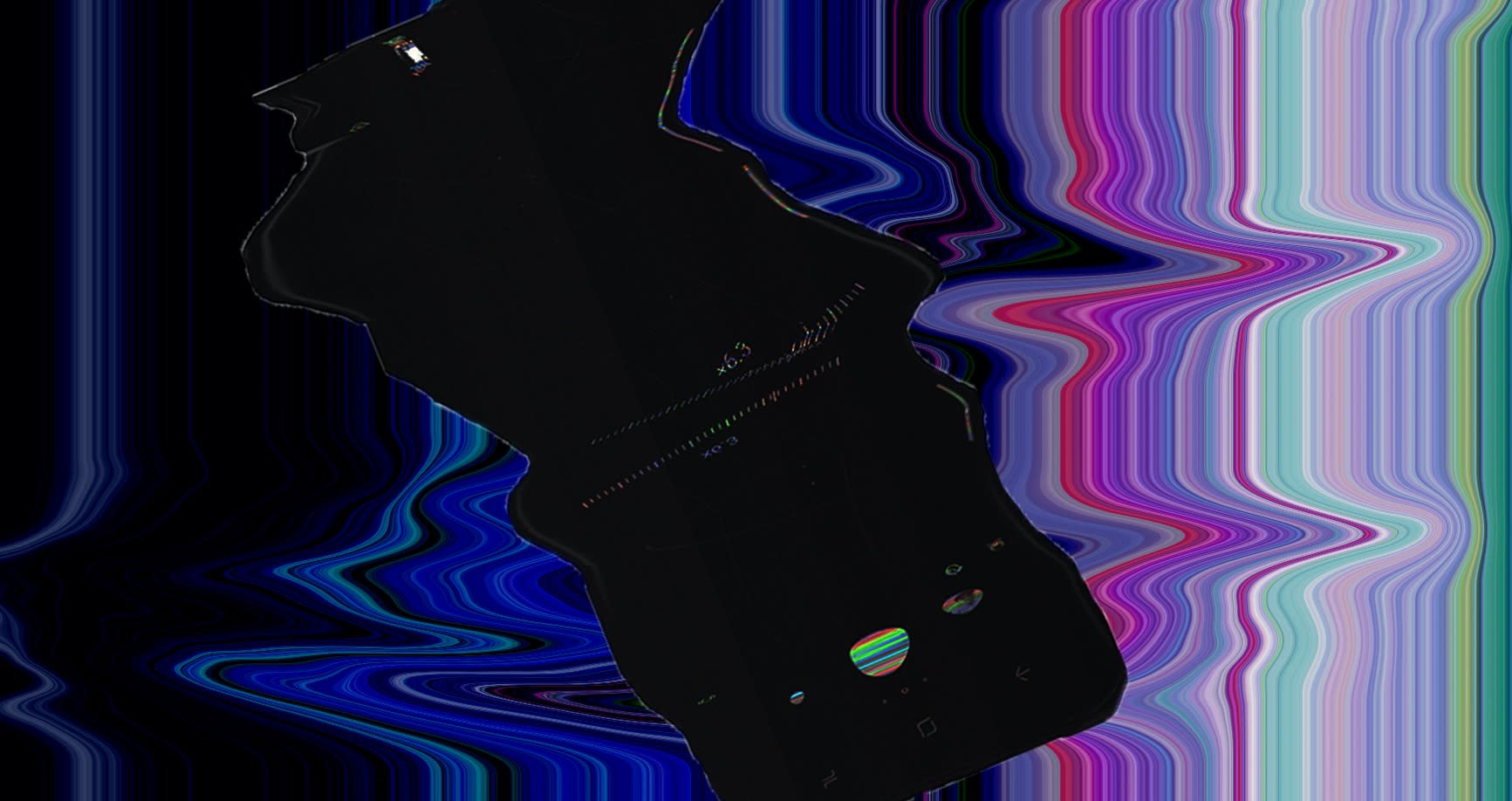
Collaboration between Xinchen Du, Huang Guaier and Wang Runzhong. On view in "A Ripple in the Data Flow."
A Ripple in the Data Flow
Curated by Xinchen Du
See it online: macp.sva.edu/a-ripple-in-the-data-flow
"A Ripple in the Data Flow" proposes a series of urgent questions too often ignored in this age of global connectivity: What kind of self-awareness can users maintain when they are actively, passively or indirectly accessing data? If data is structured in a rational way, to what extent are we rational when using data? What are the perils of infatuation with the networked world and the many kinds of information, pleasure, convenience and fantasy it offers? Curated amid the unprecedented human novel coronavirus (COVID-19) pandemic, "A Ripple in the Data Flow" becomes an online virtual exhibition at a time when many events and activities are forced to go online. It thus reflects on how our understanding of reality and virtuality is enhanced by this extraordinary situation. For more information, contact Xinchen Du at xdu1@sva.edu.

Photograph by Broken Image Photography. On view in "Normal Bob: Pray for Satan."
Normal Bob: Pray for Satan
Curated by Becka Jean Marsh
See it online: macp.sva.edu/pray-for-satan
"Pray for Satan" is the first online exhibition to map 30 years of artwork by Normal Bob Smith (Robert Hain), whose works in a variety of media provoke uncomfortable questions regarding religion, freedom of speech, sexual predators, exploitation and offbeat kinks. "Pray for Satan" asks how Normal Bob’s skill for stimulating debate reflects the messiness of contemporary discourse more generally: What is too risqué to say? Is anything too sacred for satire? Why are we, as a society, afraid to discuss certain issues? Channeling the power of punk, Normal Bob’s controversial artworks challenge normativity and together form an important case study in radical individualism, religious criticism and contemporary art thriving outside the mainstream. For more information, contact Becka Jean Marsh at rmarsh1@sva.edu.
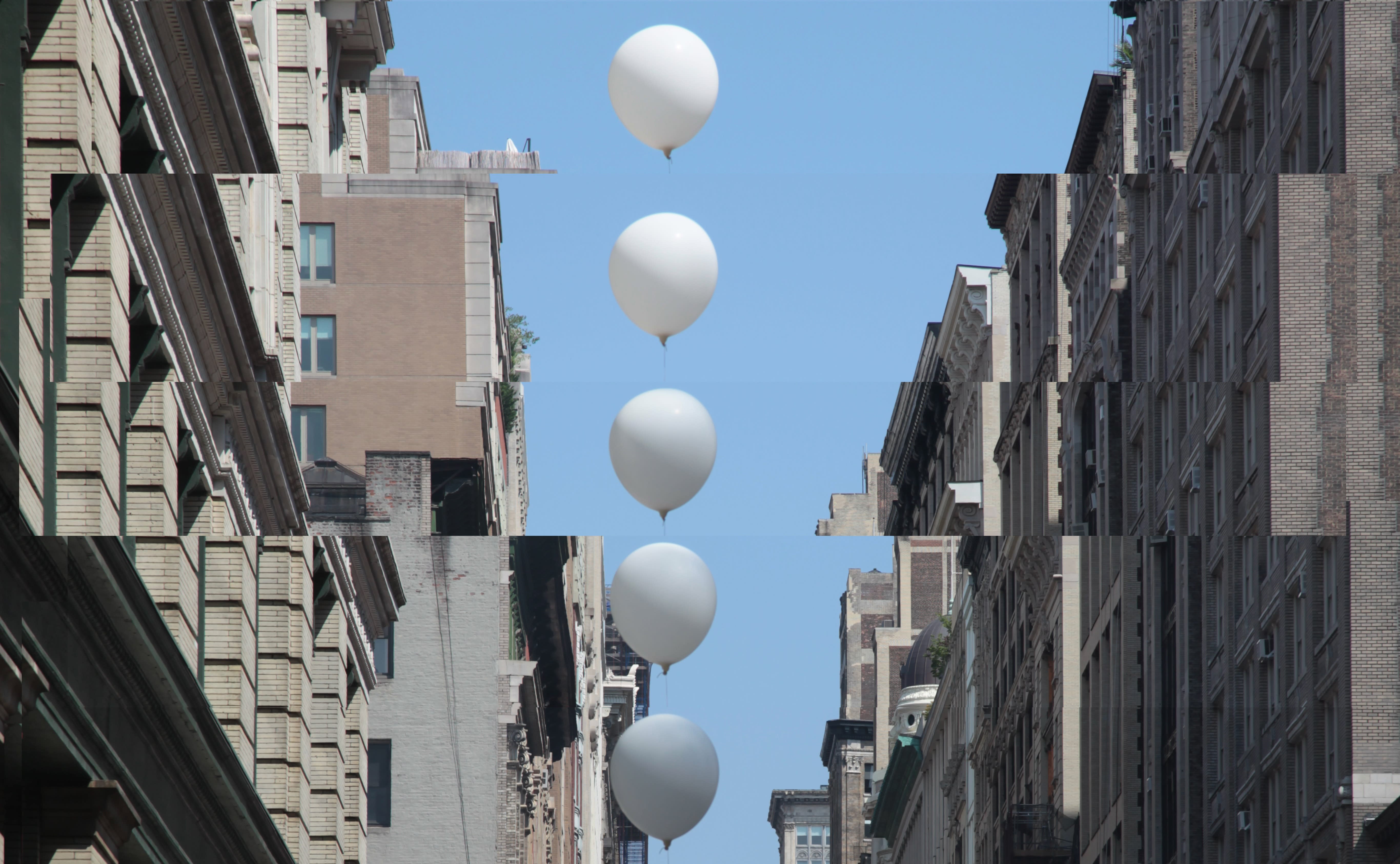
Tao Wei, Balloon in the City, 2019. Courtesy of the artist. On view in "Floating."
Floating
Curated by Anqi (Angie) Nee
See it online: macp.sva.edu/floating
Numerous global mass-migrations have caused people to experience various disordered self-perceptions: the ego and the id, hometown and elsewhere, rebellion and reconciliation, space and body, nostalgia and futurity. Human diasporas help us to understand cultural identity in terms of movement rather than of absolutes. Unstable and changing environments are often stimulating and inspiring for artists, and "Floating" presents paintings, installations and video works that externalize the complex conditions of abstract psychological states and geographical migration. Like other keywords of our time—transparency, migration, instability, rootlessness—"Floating" points to a lack of psychological belonging and the physical and mental states of being that result from that lack. For more information, contact Angie Nee at ani1@sva.edu.
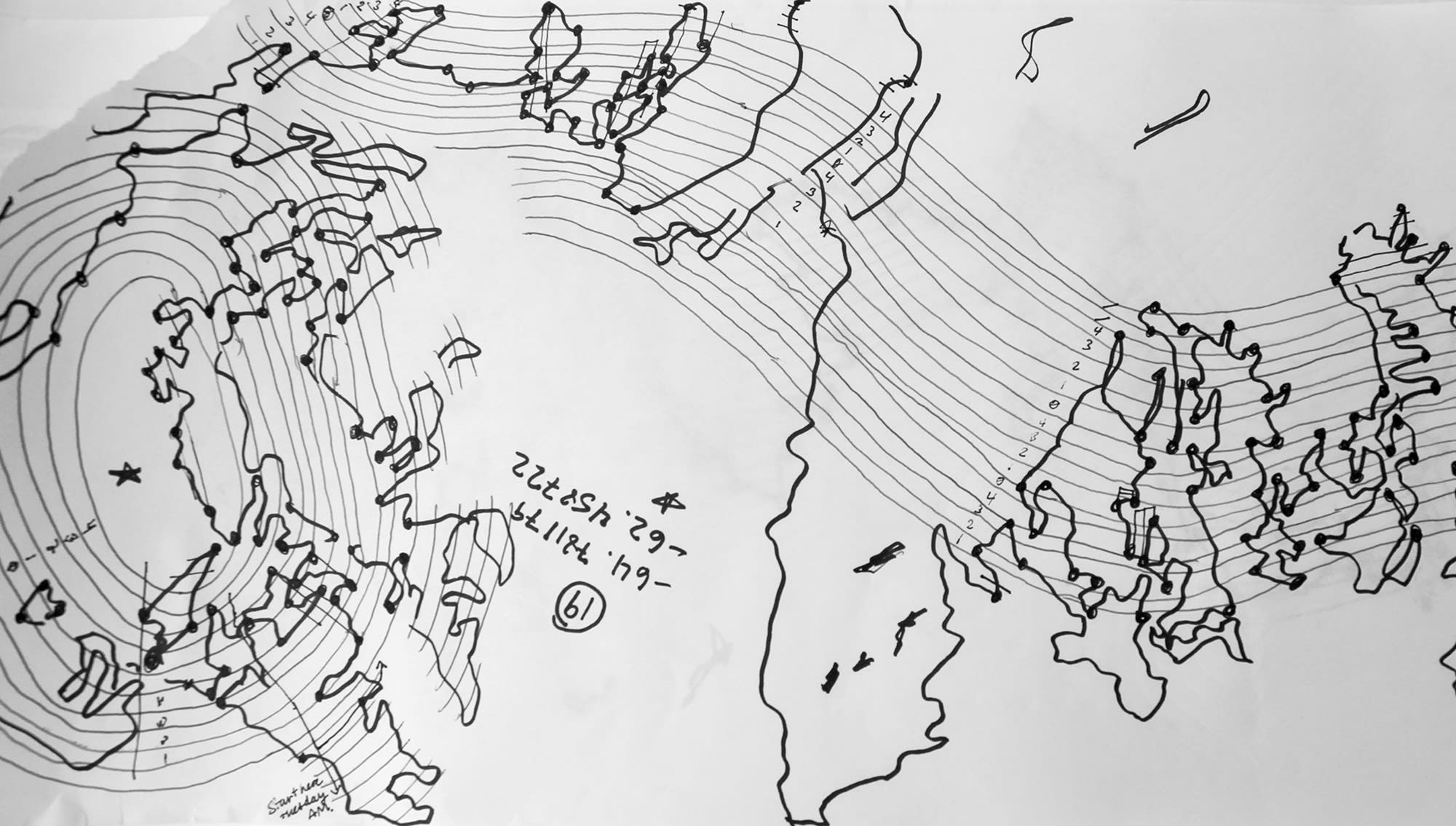
Lou Sheppard, Requiem for the Antarctic Coast, 2017, musical composition and drawings. On view in "Count No Man Happy Until the End Is Known."
Count No Man Happy Until the End Is Known
Curated by Yaoli Wang
See it online: macp.sva.edu/count-no-man-happy
"The Anthropocene" is the name that has been given to our current geological age, defined by the dominant impact of human and industrial activity on the planet and its biosphere. Through the work of eight artists and collectives, the virtual exhibition "Count No Man Happy Until the End Is Known" invites the audience to explore ways in which the Anthropocene has profoundly altered the relationship between humans and the ecosystem, including politics, economics, sociality, security of many kinds and, as we see now, the entanglement of globalism and the new order of pandemicism. Climate volatility, and all that it ramifies, force us to face the prospect of a very different human world and even a future without humans. "Count No Man Happy Until the End Is Known" asks us, what are the choices we must make? For more information, contact Yaoli Wang at ywang135@sva.edu.

Ana Prvački, Hand Pollination Glove (2018), still from video, Image courtesy the artist. On view in "Will You Be There."
Will You Be There?
Curated by the MA Curatorial Practice class of 2021: Isabella Anastasio, Ashlin Artemesia Ballif, Angelica Maria Fuentes, David Hanlon, Minji Lee, Clifford Loh, Adeola Olakiitan, Marley C. Smit, Yuan Zhi and Xiao Zong
See it online: macp.sva.edu/will-you-be-there
"Will You Be There?" is a virtual exhibition exploring the precariousness and necessity of togetherness, particularly in moments of exigency. Concepts of community are often defined by shared space—whether in physical space or in the metaphysical space of common ideas—but in the interest of social distancing, the exhibition "Will You Be There?" will not occupy a physical space. "Will You Be There?" utilizes a digital platform as a means to sustain community in the absence of physical gathering, and asks: How do we conceive of community in a climate in which social distancing and self-quarantine become necessary? How can we come together in shared space when it is essential we all stay home? The COVID-19 outbreak has brought these questions to the front of social consciousness and, as a response, the exhibition brings a roster of international artists who explore ways of giving and receiving care, of sacrifice and responsibility within our symbiotic relationships in the face of uncertainty.

